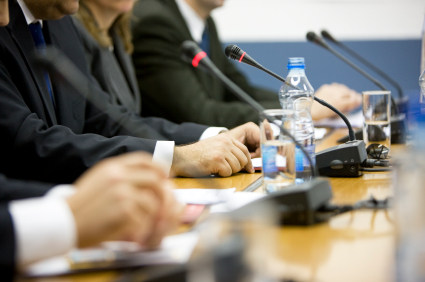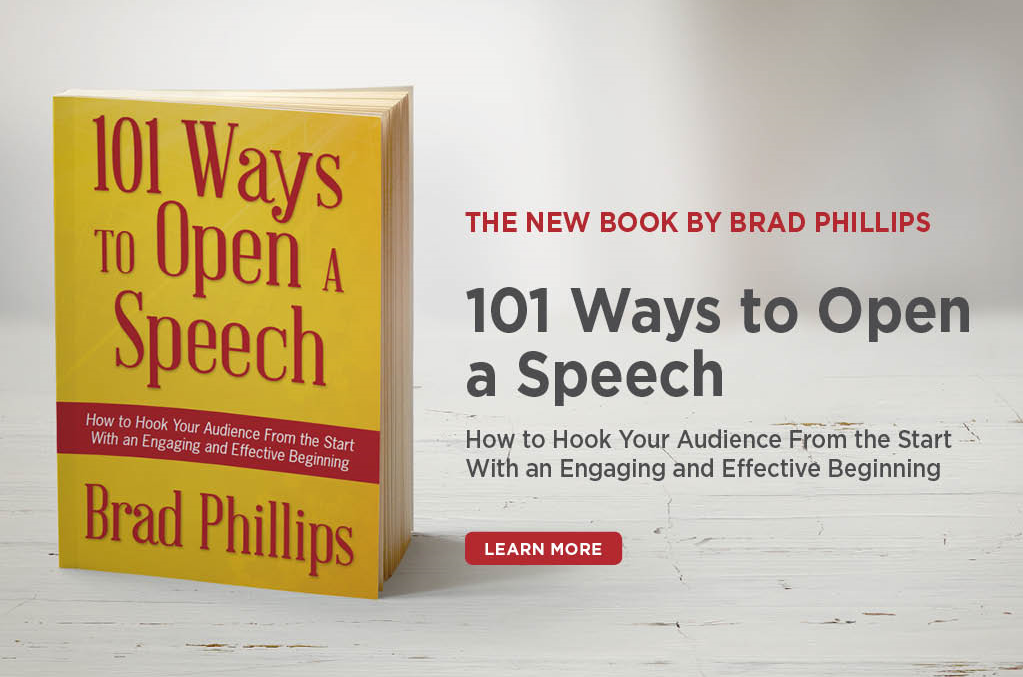Six Ways To Electrify Your Next Panel Discussion
I hate panel discussions.
Sure, I’ve been to the occasional panel discussion that features an unobtrusive moderator and three panelists who capture the audience’s attention. But they’re rare. Finding a great panel discussion is more challenging than finding a chain drug store with friendly customer service.
The problem is the format. Too often, you’ll find four people—a moderator and three panelists—all jostling for airtime. Egos gets in the way, with the people on stage inserting themselves to make sure they each get their fair share of the talk time. And with four people taking the discussion into different directions, it’s often difficult to form a narrative thread that carries through the entire session.
Even the logistics for the usual panel session contribute to its awfulness: If you ask even the most energetic speakers to sit at a table and hunch over to speak into a microphone, their energy will inevitably be diminished.
All of that made me wonder: Is there a better way to structure panel discussions?

Here are six ways to enliven your next panel discussion:
1. Look For Areas of Disagreement: Pre-interview your panelists and look for areas of disagreement (if there aren’t any, you’re at risk of booking a boring panel). You may already do that, but here’s the key–don’t share the specific disagreements with the other panelists prior to the session. That will help keep some electricity in the air; when the panelists are confronted with opposing views, the audience will be able to see their genuine reactions.
2. Be a Relentless Time Cop: Have a conference call with your panelists in advance, advising them that you intend to keep the discussion moving quickly. Tell them that as soon as their answers exceed one minute, you’re going to cut them off by saying something such as, “That’s a great point, Susan. I’d like you to pick up on that David.” That puts panelists on notice that you won’t allow soporific filibusters—and the crisp pacing helps preserve the energy in the room.
3. Remove The Table: The majority of panel discussions are conducted from behind a long table. Get rid of it. The table is a physical barrier that separates the panelists from the audience. Worse, it diminishes the speakers’ natural body language. Just try gesturing enthusiastically while seated in a hunched-over position at your desk, your elbows attached to the surface. Pretty hard, no?
4. Use Stools or Chairs Instead: I often encourage clients to position stools or chairs at the front of the stage. That set up conveys a more casual and inviting “living room” feeling—which is the reason all of the morning news show use it. This format allows you to use wireless microphones instead of table microphones.

5. Don’t Be Afraid to Be Playful: Depending on the seriousness of the topic, you might consider using a more playful format. For example, if speaking in Indianapolis or Daytona Beach, you might consider waving a racing flag when someone exceeds their allotted time. If speaking during the presidential election season, you might use the red, yellow, and green lights typically seen during televised debates to warn them their time is up. Or you might ask the audience to do a show of hands on a given topic and ask the panelists to respond to the audiences’ opinion. (If the audience overwhelmingly votes one way, you might turn to a panelist and say, “Give me one reason they’re wrong.”)
6. Kill The Ten-Minute Introductory Comments: Here’s a common set-up for panel discussions: In a 50-minute breakout session, each panelist gets 10 minutes to make introductory statements, which eat up the first half-hour of the session. That leaves only 20 minutes for interaction, the real purpose of a panel “discussion.” Instead of asking each panelist to give a lengthy intro, try the opposite approach: begin the panel by asking each panelist, in 30 seconds or less, to offer a strong opinion on a riveting topic.
Have the best of the blog delivered to your inbox twice per month! Enter your name in the box below to join our mailing list.



Once again, a solid, useful topic. Like all of the suggestions except for Number 5; see Carrot Top once and you’ll automatically tune out props. Intros should be done by the moderator in bullet form. Brad Phillps, Founder X, Before that, Y and Z. Specializes in A, B, C. Maybe educational background because it helps you network but that’s it.
The panel is only as good as the participants. The people in the room are usually in your field/have a strong enough interest to sit through a panel discussion and they want to learn from you. When it becomes an ego-driven, drone-on-about-greatness fest, I dream of being able to throw eggs. Panelists should come at it like they’re teaching a grade school class or if they ever dreamed about being on Letterman. Attach a story to your point that is short, to the point, and a bit entertaining to hold attention and let it sink in. As with media interviews, you shouldn’t fill dead air once you’ve effectively made your point.
Mike –
Great points, and I really like your analogy of a great panelist to a great guest on Letterman (or another similar chat show).
As for props, I agree that they should be used judiciously, and probably by experienced speakers only – you’re right that their misuse can backfire badly, although I wouldn’t take the option off the table entirely.
Thanks for commenting,
Brad
I agree that removing the table is a good move. However, warn your women panelists beforehand.
My business attire is about 80 percent skirts and dresses, and I got surprised once with chairs when I had expected a table. The hotel staff changed it right in front of me; the previous panel had had a table with a drape, and there they were, setting up directors’ chairs – on a platform, yet!
Just so you know, it’s physically impossible to keep one’s knees together a la Mrs. Thatcher in a director’s, even at my 5’11” height.
At any rate, I literally ran upstairs to change and it was very discombobulating.
Hi Briana,
Yes! I’m so glad you added that important reminder to the blog. I’m only sorry I didn’t think to include it in my original post, but I will make sure I provide my clients with that reminder every time we discuss panel presentations.
Thanks so much for taking the time to leave that valuable feedback.
Brad
Brad –
Thanks for another great post. As the Programming Chair for the Spokane Regional MarCom Association, my job is to put on a program each month for our membership. Among the items on my list of possible programs for fall of 2013 is a panel discussion on how to be a good client for marketing and PR agencies. While I actually enjoy panel discussions (the well-managed ones, of course), these tips are very helpful.
I think a good panel discussion depends on a good moderator. Knowing when to cut panelists off and being comfortable and confident in doing so helps. I also think a moderator that actually listens and asks follow up questions is good. Moderators who just listen to the sounds of the voices and watch the clock aren’t any good.
In the past, we’ve tried a sort of “fireside chat” format and it was well-received. It’s a cozy, intimate setting and the audience responds well to that, generally. Again, a good moderator makes or breaks the presentation.
Again, thanks for the excellent blog post!
Kevin,
Thank you very much for your feedback regarding panels.
The strong language in the introduction to my post (“I hate panel discussions”) is generally true for me, but also a bit of an over-statement. Although I find that they’re too often rudderless and suffer from a lack of strong direction, I agree with you that a strong moderator can make them work, and often well.
You’ve identified some key traits of good moderators/interviewers. I’ve written more about how to be a better interviewer here.
Thanks very much for your comment, and please keep them coming!
Best wishes,
Brad